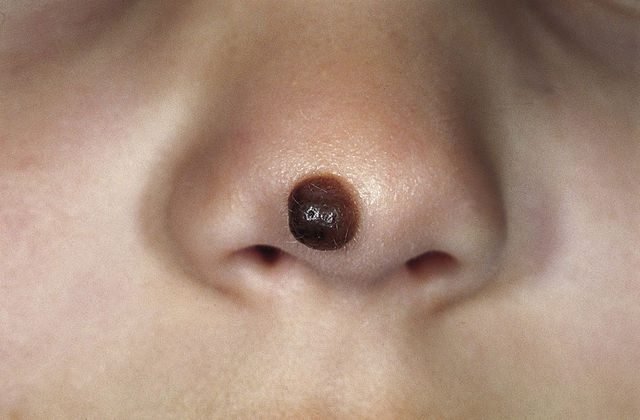
Laser Treatment of Congenital Melanocytic Nevi
Congenital melanocytic nevi (CMN) are nevi are a type of birth mark that are present at birth or develop within the first few weeks of life. They are fairly common, reportedly occurring in 1-2% of the population. They are commonly seen in a dermatology office. Congenital melanocytic nevi are associated with an increased risk of melanoma when the number of nevi are large, or in individuals with lesions greater than 20 cm. Many patients have cosmetic concerns. For a large CMN, a staged excision is often the treatment of choice, and for smaller lesions a single surgical procedure may suffice. For some lesions, however, location or patient preference may make surgical removal difficult or impossible. Typical locations include the nasal tip, periorbital areas, glabella, and cheeks . In these cases laser treatment may provide cosmetic improvement. It should be noted, however, that destruction of the lesion without the ability to take a specimen for pathology carries some risk of misdiagnosis.
The laser of choice for treating CMNs is a combination of an ablative laser, such as the DEKA SmartXide DOT and a pigment-specific laser, such as the Revlite Q-switched Nd:YAG laser. Multiple treatments are required, separated by one to three months. Treatments with both lases can sometimes be combined on the same day. Laser treatment can also be combined with partial excision for larger nevi. A recent study, however, has shown that repigmentation can occur after apparently successful laser treatment, even several years after treatment, due to residual deep melanocytes. Several years of treatment and follow-up may therefore be required. Common side effects of laser treatment of CMN are erythema, hypopigmentation and textural irregularity. Hypertrophic scars and keloids can also occur.

